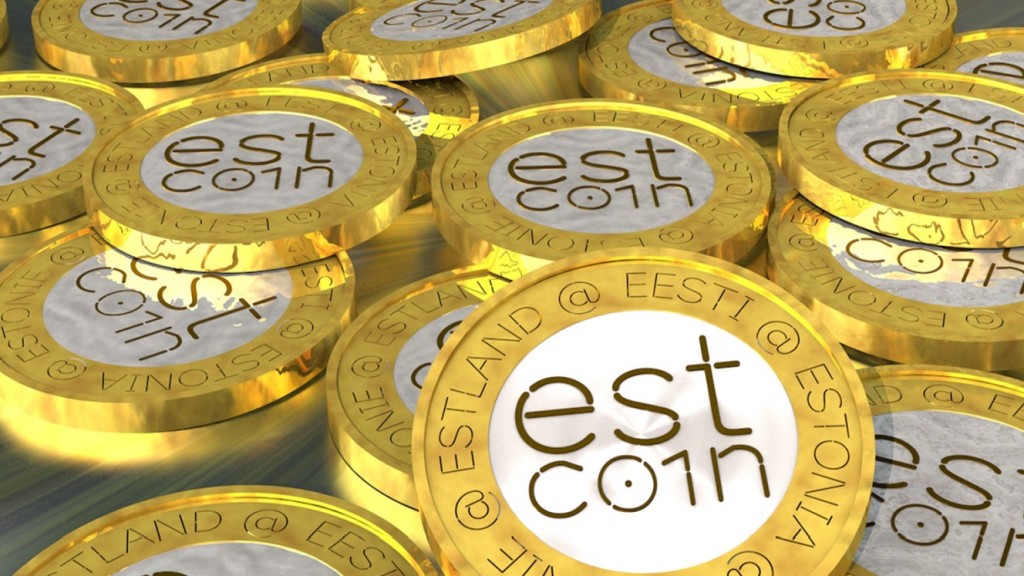Estonia could become the first country in the world with virtual currency, the Estcoin. The problem is that the country’s official currency is Euro and membership in the Eurozone does not allow having any other parallel cryptocurrency. What is the Tallinn’s way out of this pickle? And given the current drop of value cryptocurrencies, does it still make sense to create a new one?
Crypto is the new sexy. The boom of the market with cryptocurrencies brought governments all over the world the idea of creating their own digital money. And while major powers such as Russia, China or Japan are working day and night on digitalization of local currencies, it is a small European country which is very likely to win this race.
Estonia was the first in the whole world that became a victim of a massive hacking attack in 2007, which completely paralyzed the country. Yet, instead of blaming Kremlin, Estonian government has, inspired by the golden rule “what doesn’t kill you makes you stronger”, decided to turn this attack into their own advantage.The country became the promised land of digitalization. Wi-fi is strong and commonly available, credit cards are accepted everywhere, and thanks to the digital system state administration has never been neither so transparent, nor so efficient as it is now. The success has been so stunning that the Estonian government has decided to share benefits of digitalization with others.
Estonian government invented the concept of so-called e-residency, which basically allows anyone in the world to become a resident of Estonia. At the beginning of this project in 2014, people were joking that soon Estonia will have each year more new citizens via e-residency than via birth. However, the joke turned out to be true as the popularity of e-residency grows. Already 24,000 people all over the world become e-Estonians and over 4,200 new companies were founded in the country this way.
Three Ways to Go
This digital idyll, however, does not change anything about the fact that as a member of Eurozone Tallinn is not allowed to create any parallel currencies. Chief of European Central Bank Mario Draghi made it clear. But Kaspar Korjus, founder of the e-residency and mental father of Estcoin has a way out of this pickle. “We never want to question the euro. Crypto coupons virtually represent an asset or utility value that can be traded, but only through the ecosystem that would accept such a coupon”, explained Korjus in his interview for Czech Economy Daily. According to him, there are three ways how Estonian cryptocurrency Estcoin could work.
- According to the first scenario, Estcoin could serve inside a growing community of Estonian electronic residents as a means of rewarding those who are working on developing the program. They could also trade with each other with this currency.
- The second option would be to make Estonian part of the digital identity of Estonian citizens. Coupons would not be traded, but citizens would have to come to them if they committed a crime, instead would receive them for contributions to the community. They could replace today’s digital citizens, allowing for easier communication with the state administration. Estonia would become almost absolutely transparent.
- The third option the Estonians are considering is to create an alternative currency, link it to the euro, and then trade it in virtual space. This would, however, require the Estonian Government to undertake, if necessary, to cover each Estcoin with the euro. According to Korjus, the possibility of Europe’s digital currency as a modern tool for global exchange of value is to be considered due to the rapid technological development in the world.
Estonians also want to create a platform for an increasingly popular ICO process (to be issuing a kind of virtual vouchers, a similar issue of stock market shares to get the company’s money). “In order for Estcoin to become a reality, we must make our e-citizenship the best global opportunity for ICO”, emphasized Korjus.
Eager Asia
Also bigger players – such as Russia, China or Japan – are working hard on digitalization of their own currencies. China is already dominating the Bitcoin market. Beijing also created a team of experts for research of cryptocurrencies already in 2014. In 2016, Chinese central bank announced that they are soon to launch their own cryptocurrency. Alas, a cryptocurrency would give the ruling Communists yet another tool enabling them to control their citizens.
A group of Japanese banks lead by Mizuho Financial Group is about to create their own cryptocurrency – J Coin, which would be convertible to Jen 1:1. Tokyo would like to launch their J Coin before the Olympic Games in Tokyo in 2020.
Mining Bitcoins
The popularity of Bitcoin has experienced a significant slippage in spite the booming cryptocurrencies market. The value of Bitcoin was about 20 thousand dollars before the Christmas of 2017, now it is less than a half of this value. Only last week, Bitcoin dropped by more than 30% of its value. So the million Estcoin question is: can creating a new cryptocurrency still pay off?
“It is clear that the price of Bitcoin is overwhelmingly inflated, but we should not throw the baby out with the bathwater. The bubble around the Bitcoin does not reflect the potential of crypto economics”, says Kaspar Korjus. As he points out, “We want to use the Estcoin project as a tool for creating a new world, not as another instrument of speculation or other commodity”.



